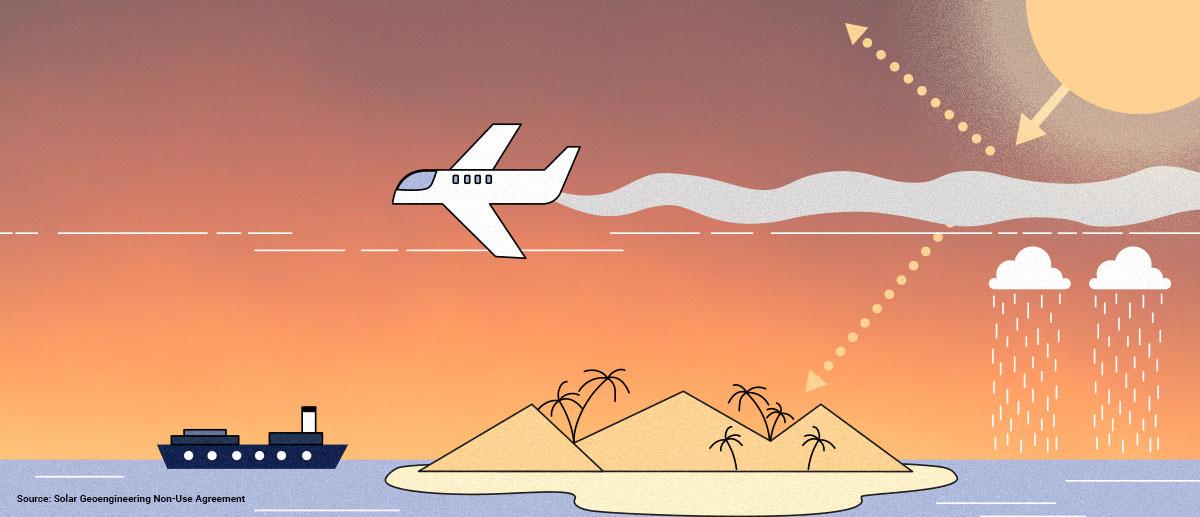Imagine a world where scientists deploy technology to reflect some sunlight away from Earth, actively cooling the planet. This isn’t just science fiction but it’s the focus of cutting-edge geoengineering research in the UK, aimed at buying time against dangerously rising global temperatures.
How Would Blocking Sunlight Work?
Solar geoengineering, also called Solar Radiation Management (SRM), uses deliberate interventions to reduce the amount of solar energy that reaches Earth’s surface. The goal? To cool the planet and slow (or even temporarily halt) the impacts of global warming.

Examples of Sunlight-Blocking Technologies
- Cloud Brightening: Scientists inject tiny particles into marine clouds, making them whiter and more reflective. These clouds bounce more sunlight back into space, reducing the amount absorbed by Earth.
- Stratospheric Aerosol Injection (SAI): Inspired by volcanic eruptions, researchers study spraying fine reflective particles (like sulfur aerosols) high into the atmosphere. These particles scatter sunlight before it reaches the ground.
- Space-Based Reflectors: Concepts include deploying enormous mirrors or shades in orbit, physically blocking or redirecting a fraction of incoming sunlight.
- Thickening Arctic Sea Ice: Techniques involve spreading seawater over existing ice to promote freezing and increase reflectivity, further bouncing light away.
Essentially, these technologies act as a kind of "sunshield," cooling Earth by controlling how much sunlight gets through.
But What Is Geoengineering?
Geoengineering is the deliberate large-scale intervention in Earth’s climate system, not just to block sunlight, but also to remove greenhouse gases from the air. The UK is one of the world’s leaders in this field, supporting both solar geoengineering and greenhouse gas removal.
Why Is Geoengineering Being Considered?
- Rising global temperatures: Despite worldwide efforts to cut emissions, the planet keeps heating up.
- Emergency tool: Geoengineering is researched as a potential emergency measure. If we’re nearing climate “tipping points,” technology could buy crucial time to address the underlying problem (greenhouse gases).
- Responsible research: The UK’s approach is cautious, funding small-scale experiments and computer modeling, emphasizing transparency, ethics, and public input.
Other Geoengineering Methods
- Greenhouse Gas Removal (GGR): From planting forests (afforestation) to high-tech machines that pull carbon from the air, these methods aim to directly tackle the cause of warming, not just its symptoms.
Impacts and Risks of Blocking Sunlight
Blocking sunlight might lower global temperatures, but it’s not without risks:
- Possible changes in weather patterns, rainfall, and droughts.
- Unknown long-term effects: on crops, wildlife, and oceans.
- Moral hazard: the temptation to rely on tech solutions instead of cutting emissions.
- Need for global cooperation: actions taken by one country could affect climates worldwide.
That’s why the UK stresses climate intervention as a last resort, not a replacement for slashing carbon emissions.
In Summary
Solar geoengineering sounds dramatic, actively blocking the Sun to cool the Earth. In reality, it’s one piece of a much bigger puzzle: understanding climate risks, developing emergency options, and making sure all efforts are safe, ethical, and transparent. The UK’s work in geoengineering is at the cutting edge, but its priority remains reducing emissions first and using technology wisely, only when absolutely necessary.


Comments0
No comments yet. Be the first to share your thoughts!